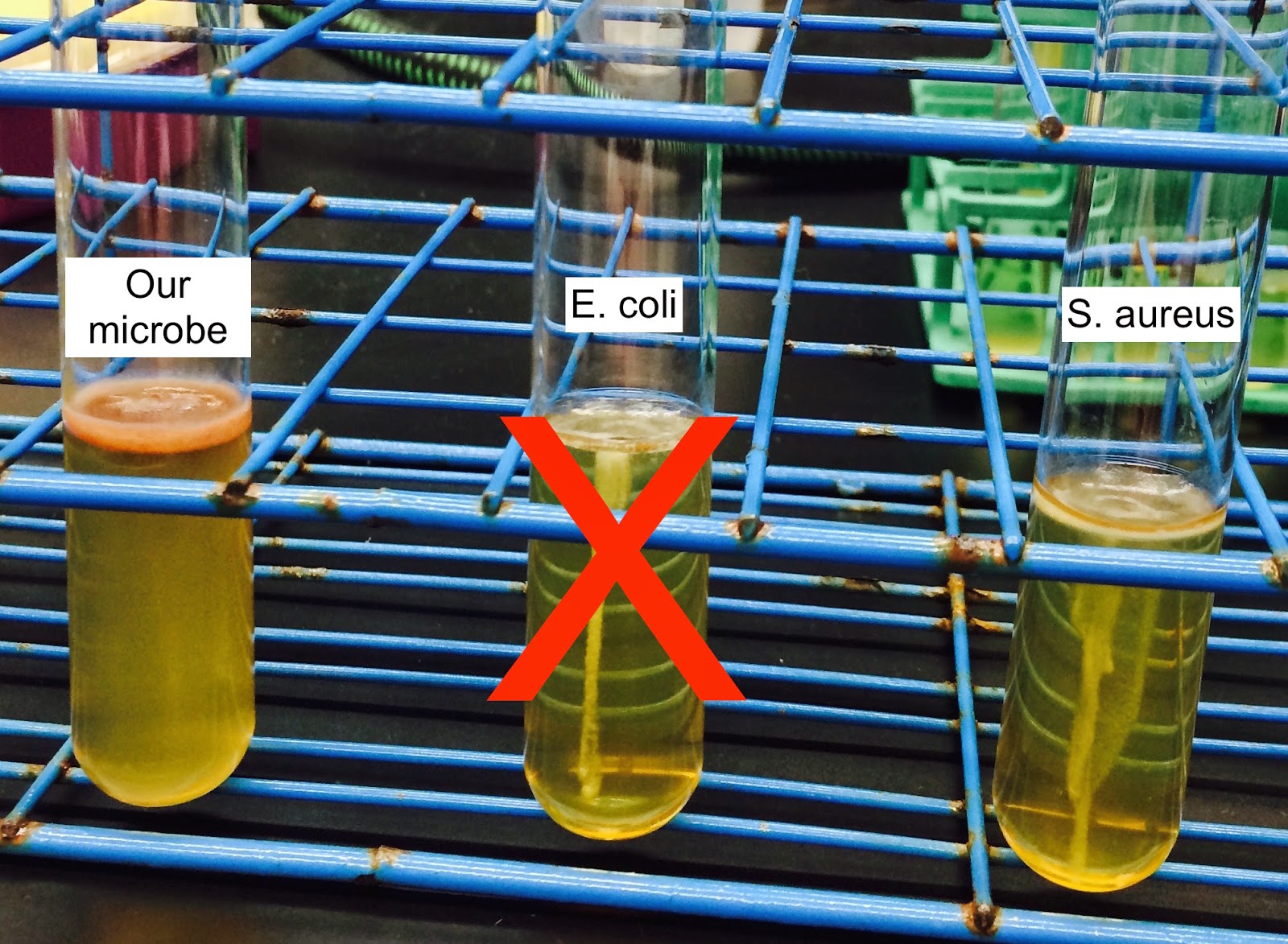In order to further characterize our unknown microbe, this week's lab focused on determining whether or not it is able to lyse red blood cells.
There are two ways that bacteria are able to lyse red blood cells (RBCs). Some bacteria contain a special compound composed of lipids and proteins known as hemolysin that allows them to form pores in the phospholipid bilayer of the cell membrane of a red blood cell. Other bacteria possess a different type of hemolysin that allows them to enzymatically cleave the red blood cell's phospholipid membrane.
Bacteria fall into one of three categories: alpha, beta, or gamma. These designations describe their ability to lyse RBCs. Alpha bacteria do not lyse RBCs fully. Because the RBC cell membrane remains intact, they are said to partially break down the cells, and reduce hemoglobin to another chemical that is found in blood agar medium (5% sheep blood). These typically appear as a bruise-like color when plated. Beta bacteria are able to completely lyse RBCs, resulting in a clear "halo" around a plated colony. Gamma bacteria do not interact with red blood cells, and form colonies with no surrounding discoloration on blood agar plates.
Because virulence refers to the pathogenicity of a microbe, we believe that hemolytic bacteria would be more virulent than non-hemolytic bacteria since they would more easily affect/harm an organism that possesses RBCs. Additionally, we would not expect a "typical" soil microbe to be capable of hemolysis because plants and other soil organisms do not contain red blood cells or hemoglobin. Therefore, it would be an unnecessary attribute for them to possess.
As seen in the photos below, we compared our unknown microbe to other bacteria. We believe our microbe would be categorized as alpha because of the greenish brown discoloration observed on the plate.
We are still in the process of trying to narrow down the possible identities of our unknown soil microbe. From all of our lab analyses, this is what we have determined about our microbe:
- gram-positive
- acid-fast
- ferments lactose and/or sucrose
- catalase positive
- endospore forming
- reduces nitrate to nitrite
- motile
- alpha hemolysis
Using the dichotomous key provided by Dr. Hanson, we have concluded that our microbe could be any of the following: Mycobacterium, Nocardia, Clostridium.
Check back next week for more details on our microbe.
-Anne and Austin
http://en.wikipedia.org/wiki/Hemolysin
http://www.encyclopedia.com/doc/1G2-3409800092.html
https://www.wisc-online.com/learn/career-clusters/health-science/mby4307/blood-agar-and-hemolysis






